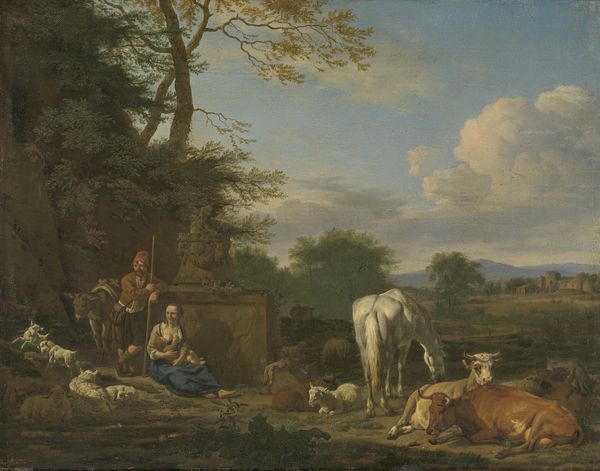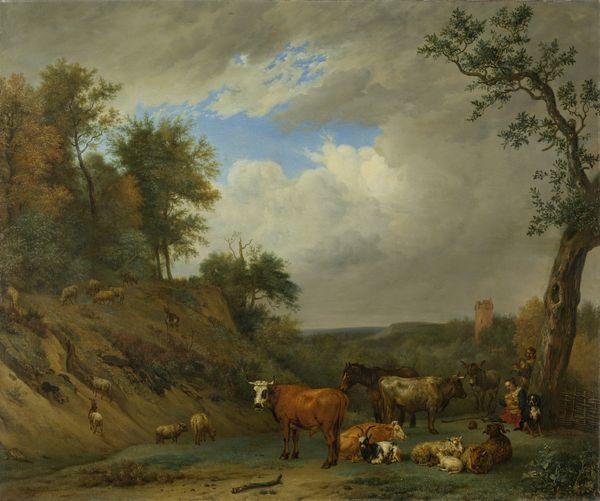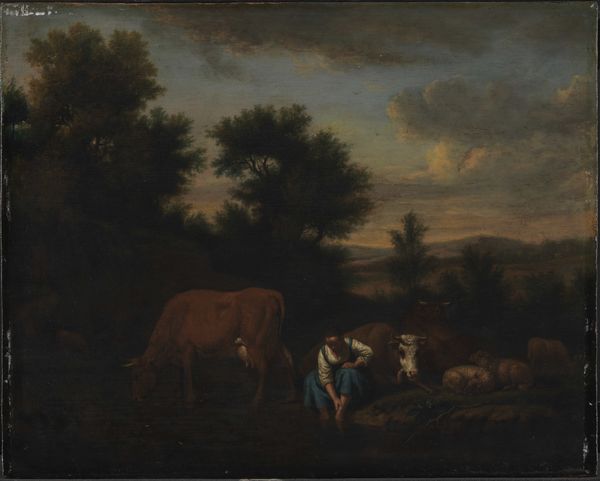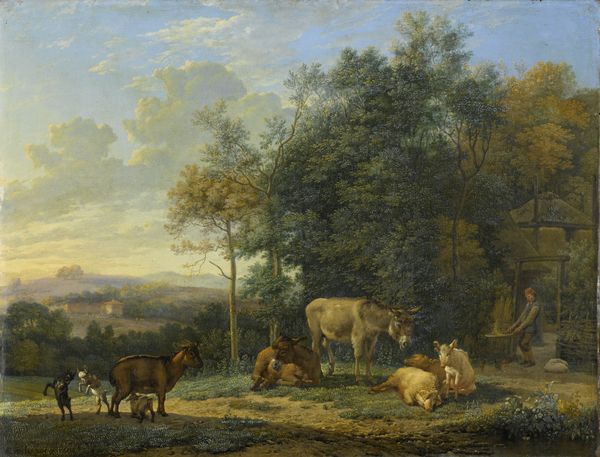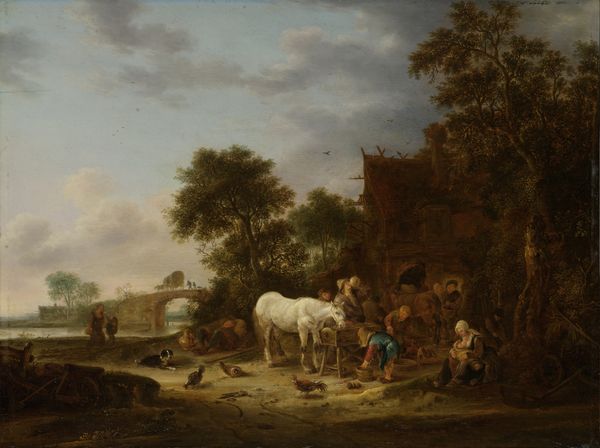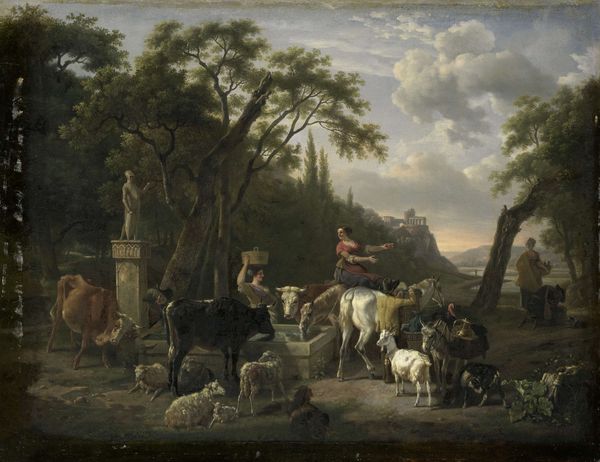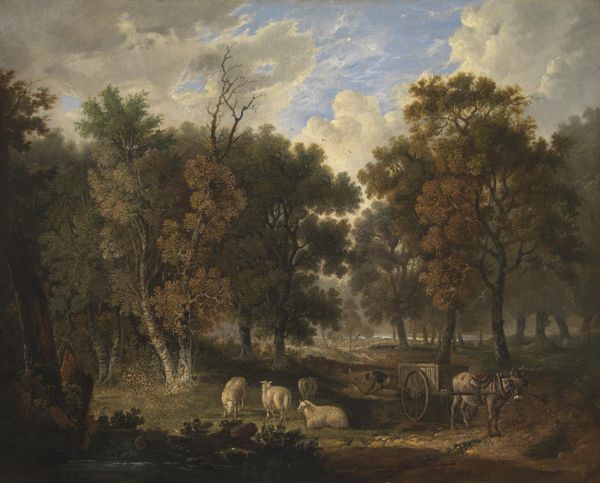
oil-paint
#
baroque
#
oil-paint
#
landscape
#
oil painting
#
genre-painting
#
realism
Dimensions: height 41.5 cm, width 52.5 cm, depth 6 cm
Copyright: Rijks Museum: Open Domain
Curator: Looking at this canvas, one can immediately discern a world bathed in pastoral tranquility. We’re viewing Dirck van Bergen's "Landscape with Herdsmen and Cattle," thought to be painted sometime between 1660 and 1690. Editor: There’s a subdued luminescence here, a visual quietude in its muted palette. It almost feels as if the artist aimed for a harmony of structure, relying less on striking colors than on balanced compositional weight. Curator: Indeed. Van Bergen was active in Haarlem, a Dutch center that greatly shaped landscape and genre painting, thus underscoring an intimate understanding of rural economics and human labor. Consider that oil paint itself would be carefully formulated and traded; the painting reveals a confluence of extraction, manufacture, and finally, artistic labor. Editor: Absolutely, and within the frame we find semiotic anchors. The herdsman tending his cattle beneath the weathered bridge suggests a narrative of rustic simplicity. Note how Van Bergen’s technique renders tactile details— the roughhewn stone juxtaposed with soft wool. Curator: The social stratification is inherent, with shepherds and cattle becoming part of an imagined rural workforce romanticized for an emerging bourgeois market that craved representations of harmony outside their urban setting. Editor: Agreed. While some interpret Baroque style for its overt drama, van Bergen appears to embrace the essence of Dutch realism in capturing scenes without artifice. See the way light refracts subtly? It enhances textural differences across natural forms and artisanal structures, reinforcing structural integrity. Curator: And there were numerous ateliers in the Dutch Republic producing such paintings en masse for a vast market. Van Bergen and his contemporaries had to balance convention and creativity to maintain patronage. Editor: And yet he manages a delicate balance. Focusing on the composition, observe the bridge itself—a stabilizing arc echoing elements that connect various areas harmoniously into one pictorial space, conveying a silent sense of space and order that stills the modern eye. Curator: So beyond this particular work, remember that it existed amidst an unprecedented surge in both specialized agricultural production and sophisticated global trade networks—that material reality forms the quiet undercurrent within van Bergen’s serene landscapes. Editor: Precisely! Van Bergen orchestrates our gaze through shape and tonal subtleties. This interplay—or visual contract, if you like—reflects much about the period's search to capture both internal and external equilibrium in an ever-changing, complex, mercantile culture.
Comments
No comments
Be the first to comment and join the conversation on the ultimate creative platform.
